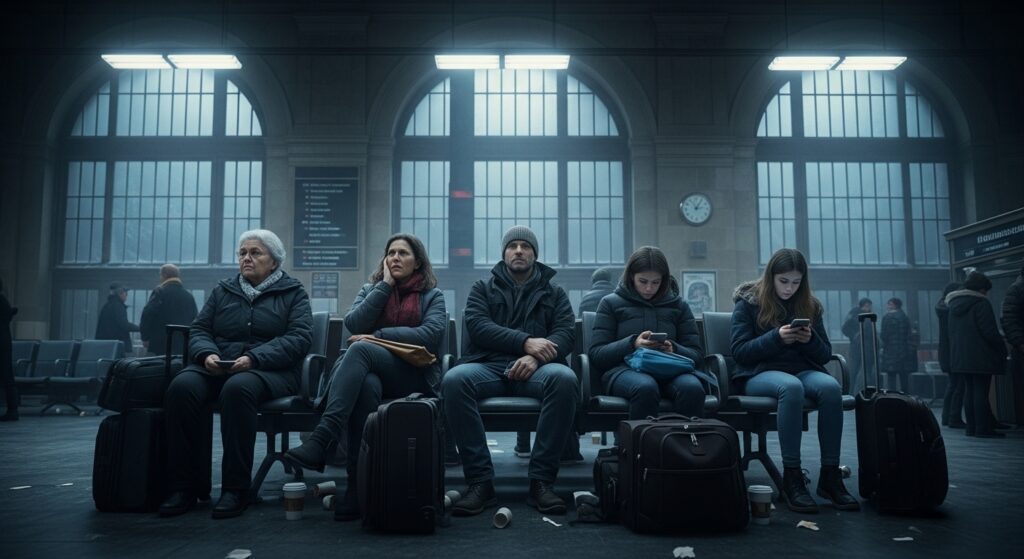
Where the Light Bends Incorrectly
How Unfinished Tales Transforms Storytelling Through Incompleteness
The Unfinished Tales and Random Short Stories project is, at its heart, an exploration of narrative as both fragment and continuum. The archive—now spanning over 425 chapters—is not simply a collection of short stories and random chapters, but a deliberate literary ecosystem, one that resists closure, embraces incompleteness, and privileges the reader’s active imagination. In this sense, the archive functions as both method and medium, inviting reflection on how stories live, resonate, and persist beyond the boundaries of beginning, middle, and end.
Fragments as a Literary Principle
Each chapter in Unfinished Tales operates as a fragment, a moment torn from a larger, imagined narrative. These fragments are self-contained yet incomplete, offering enough detail to evoke character, emotion, and setting while withholding context and resolution. This partiality is intentional: it mirrors the way humans experience life and memory. We rarely encounter events fully formed or fully explained; we apprehend moments, impressions, and fleeting intimations of relationships, landscapes, and internal states.
The fragmentary approach subverts conventional storytelling by removing the safety net of exposition and closure. Readers are placed in a constant state of interpretive engagement, encouraged to reconstruct histories, motivations, and consequences from the shards presented. This is not a failure of narrative completeness—it is a form of narrative intentionality, where the unfinished becomes the primary aesthetic and emotional vehicle.

Randomness as Structure
The archive’s “random chapter” format amplifies the sense of an expansive, living world. Though each chapter stands alone, patterns emerge across the collection: recurring motifs, landscapes, character archetypes, and emotional beats. Readers begin to sense a connective tissue—subtle echoes of longing, anxiety, or revelation—that suggests a larger, coherent universe without ever explicitly mapping it.
Randomness, in this case, is a structural device. It allows readers to wander through narrative space as they might wander through memory, experiencing disparate moments that resonate with thematic continuity.

Temporal and Emotional Suspension
One of the archive’s defining effects is the suspension of time and resolution. Characters are often caught mid-motion, mid-emotion, or mid-decision. Climaxes are deferred, endings are omitted, and narrative tension is sometimes never resolved. This suspension mirrors the affective reality of the lives being depicted: the moments that shape us are not always conclusive, and the emotional arcs we inhabit rarely offer tidy closure. In doing so, Unfinished Tales transforms the archive into a form of psychological realism, where the weight of what could be said or done matters as much as what actually happens.

Reader as Co-Creator
Because chapters are incomplete and often contextually opaque, the reader becomes an active participant in meaning-making. Every gap, ambiguity, or unresolved beat is an invitation: to imagine histories, speculate motivations, or project outcomes. In effect, the archive enacts a shared creative labor between author and audience. This co-authorship extends the life of each fragment beyond the text, turning the act of reading into a form of imaginative exploration.

The Archive as Literary Method
Unfinished Tales is not just a repository of narratives; it is an experimental method for thinking about storytelling itself. By privileging fragment, randomness, and incompletion, it challenges assumptions about plot, closure, and character development. It explores the tension between emotional fullness and narrative economy, suggesting that stories need not be complete to be deeply resonant. Each chapter is both an aesthetic object and a research site, a probe into how meaning emerges from partial observation, selective memory, and deliberate ambiguity.

It never ends
In the archive of Unfinished Tales, incompletion is not a deficit but a defining strength. It creates a space where the liminal, the suspended, and the unspoken flourish. The accumulation of hundreds of fragments produces a kind of literary gravity: readers perceive, intuitively, that these are slices of a world larger than themselves, rich with history, emotion, and possibility. The form itself—fragmented, random, unfinished—becomes inseparable from the content, demonstrating that the boundaries of narrative can be as elastic and expansive as the human experience it seeks to mirror.
The archive is a reminder that stories do not live only in endings. They live in the moments between, in the echoes, in the unspoken and the unresolved. In this way, Unfinished Tales turns incompletion into both art and inquiry, offering a radical meditation on what it means to read, to remember, and to inhabit a world composed of fragments.





